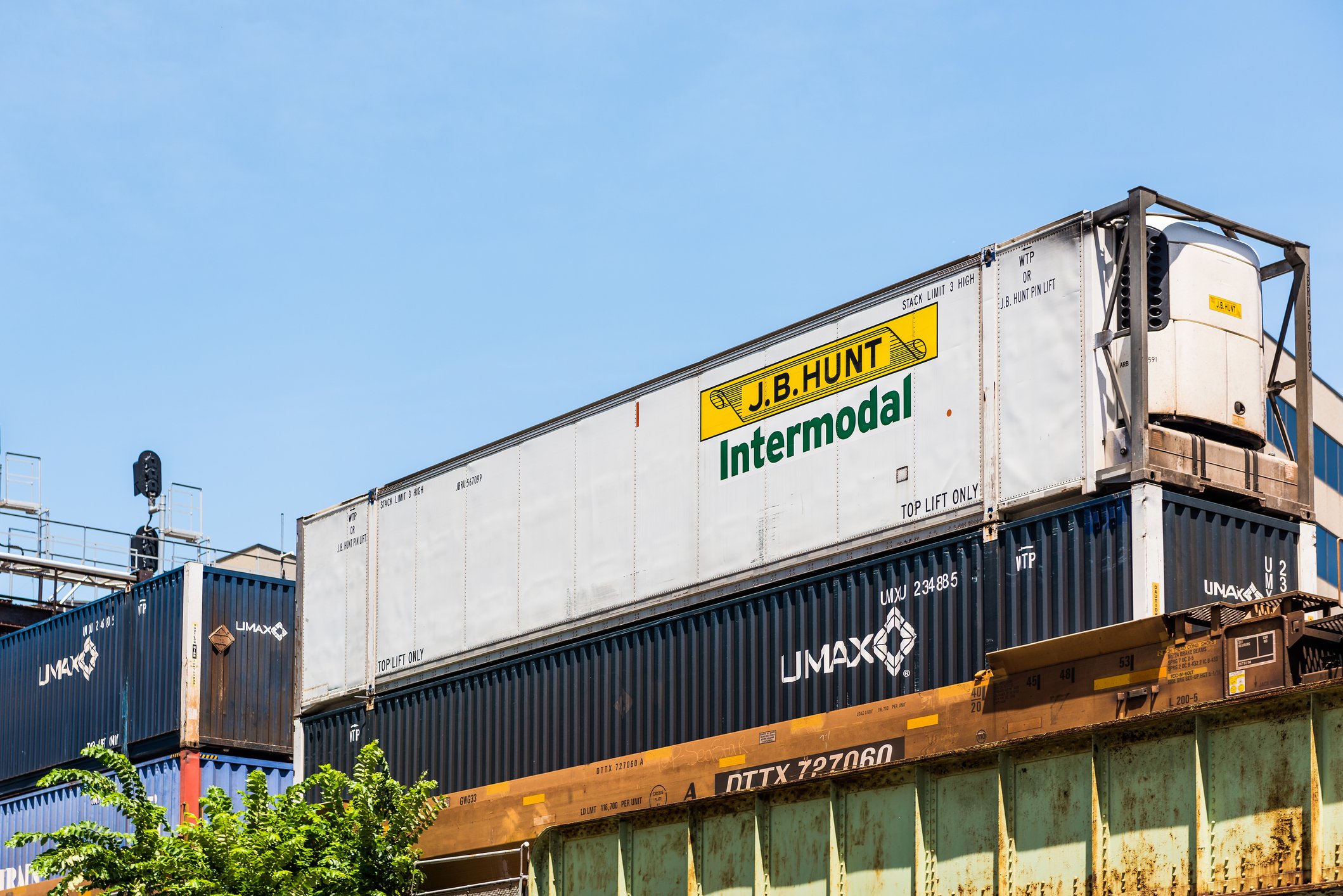Third-party logistics (3PL) leader J.B. Hunt Transport Services (JBHT +0.70%) continued to exhibit revenue expansion while dealing with profitability challenges in its second-quarter 2019 earnings report issued on Monday. Though management described current conditions in terms of a "sluggish freight environment," a few signs pointed to potentially improved results in the third and fourth quarters. Below, let's work through important details from the quarter and discuss management's perspective on the back half of the year. Note that all comparative numbers in this article are presented against the prior-year quarter.
J.B. Hunt results: The raw numbers
| Metric | Q2 2019 | Q2 2018 | Change |
|---|---|---|---|
| Revenue | $2.26 billion | $2.14 billion | 5.6% |
| Net income | $133.6 million | $151.7 million | (11.9%) |
| Diluted earnings per share | $1.23 | $1.37 | (10.2%) |
Data source: J.B. Hunt Transport Services.
What happened with J.B. Hunt this quarter?
- In the company's largest segment, intermodal, revenue dipped 1% to $1.15 billion, as volume dropped by 8% due to ongoing intermodal network rationalization (i.e. closure of underperforming lanes) by rail companies.
- Dedicated contract services revenue leaped 28% to $680 million, which management attributed primarily to higher productivity (defined in this segment as revenue per truck per week). In addition, $49 million of the roughly $150 million revenue increase stems from the division's February 2019 acquisition of Cory 1st Choice Home Delivery, a purchase undertaken to supplement its Final Mile Services (FMS) business.
- Higher revenue per load of 4% couldn't quite absorb a 7% drop in volume in J.B. Hunt's integrated capacity solutions segment (which is responsible for traditional freight brokerage and 3PL operations). Revenue fell 4% to $334 million. Solid truckload volume was undermined by lighter less-than-truckload (LTL) volume and a weaker performance in the spot (i.e. real-time pricing) market.
- In the company's smallest segment, truck operations, revenue slipped by 2% to $99.6 million.
- J.B. Hunt noted that its "Marketplace for J.B. Hunt 360" continued to draw in new users, as revenue through this portal increased to $222 million, against $137 million in the prior-year quarter. Management admitted that the online platform is experiencing some growing pains, as the company is spending more on technology expenses than anticipated to optimize the marketplace.
- J.B. Hunt's operating margin slipped 150 basis points, to 8.5%. The company cited several factors behind the decreased profitability, including lower volume, higher purchased transportation costs in the rail industry, higher facilities and equipment ownership costs, higher driver wages, recruitment, and retention costs, and increased technology modernization costs.

Image source: Getty Images.
Looking forward: Management's perspective
In J.B. Hunt's earnings conference call, management acknowledged the pressure on overall profitability due to weaker volumes in the first half of the year. This is partly due to a moderating economy and a current excess of capacity in the trucking market.
However, executives pointed out that they expect intermodal volumes to pick up in the third and fourth quarters. In addition, CEO John Roberts enumerated additional reasons why the company should continue to improve its top line while bumping up profitability in the back half of the year:
Overall, we felt like there was some positives in an otherwise weak freight environment. We saw our cost inflation becoming more normalized, and the bid season pricing is performing largely as we expected, though the range of pricing from beginning to end is wider than what we had originally anticipated.
We expect asset-based pricing in trucking and intermodal to be positive, though the year-over-year increases are ending the season in the low single-digits. In private fleet outsourcing, interest has not subsided because dedicated pipeline remains very, very strong. Specifically in intermodal, we were disappointed with the loads counts for the quarter, but we saw visible signs that the seasonality of freight flows has not completely disappeared as our loads per workday improved throughout the quarter.
Roberts also pointed to strong FMS expansion and the growth in the 360 platform as performance drivers going forward. While J.B. Hunt doesn't offer quantitative forward earnings guidance, investors appear reasonably reassured: Shares have climbed roughly 6% in the two trading sessions following Monday's earnings release.





